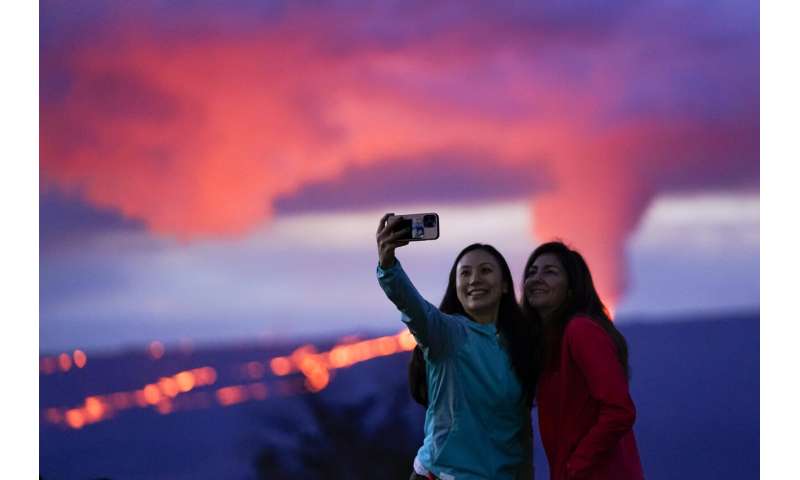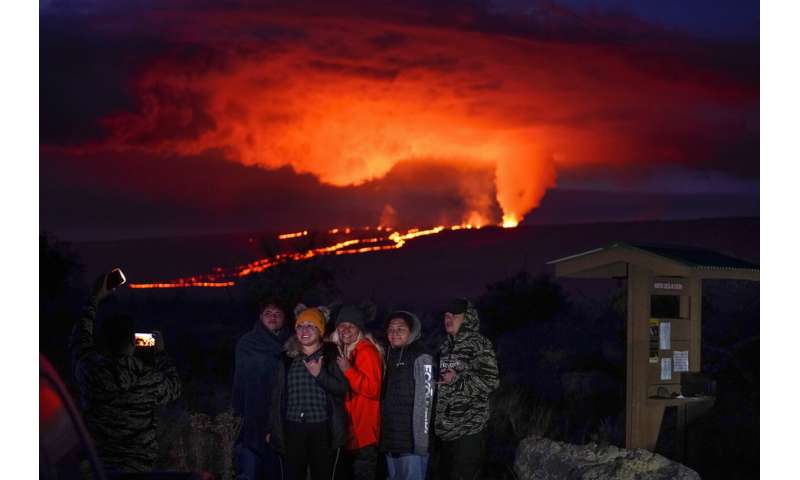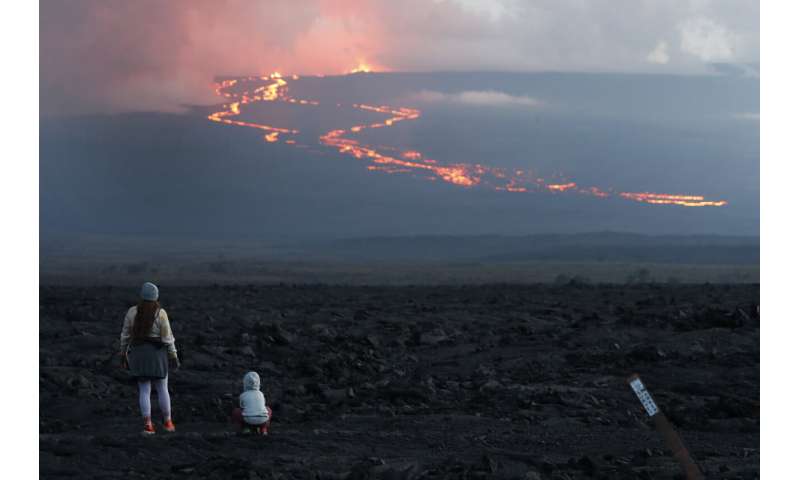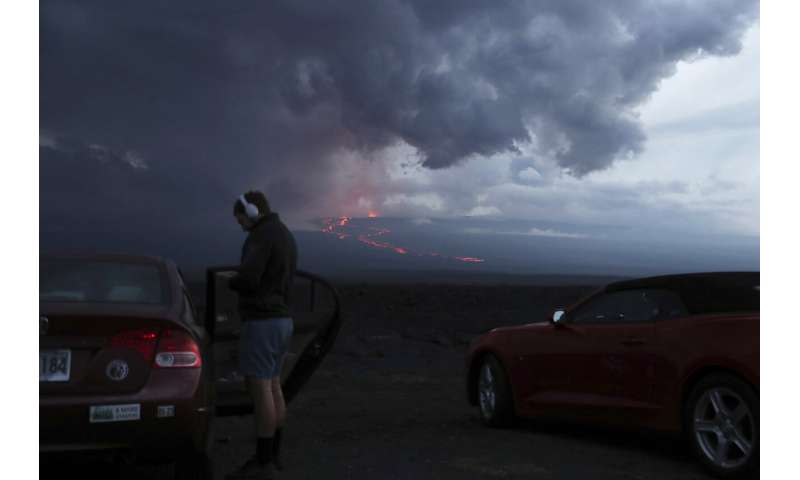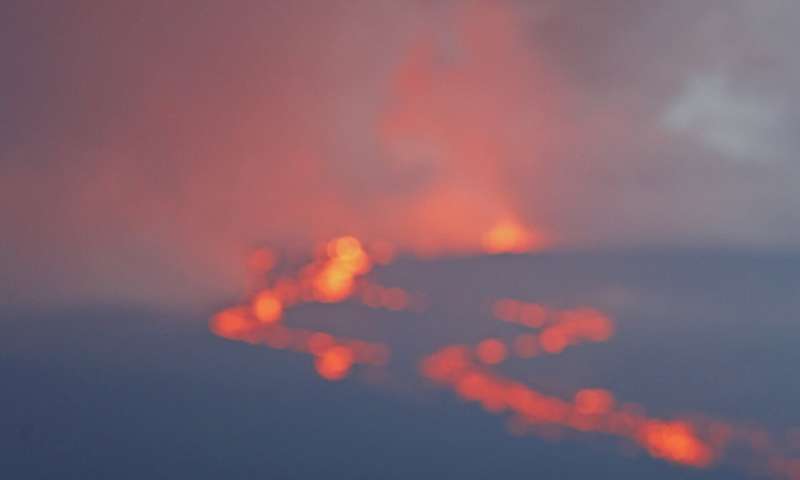A flare and a spare: Hawaii volcano visitors see 2 eruptions

The first eruption in 38 years of Mauna Loa, the world’s largest active volcano, is drawing visitors to Hawaii Volcanoes National Park, which is open 24 hours a day.
“The viewing has been spectacular,” especially at night and before sunrise, park spokesperson Jessica Ferracane said.
Visitors to the park are currently able to witness two eruptive events: the glow from Kilauea’s lava lake and lava from a Mauna Loa fissure.
“This is a rare time where we have two eruptions happening simultaneously,” Ferracane said.
Mauna Loa last erupted in 1984. The current eruption is its 34th since written history began in 1843. Its smaller neighbor, Kilauea, has been erupting since September 2021.
Officials were initially concerned that lava flowing down Mauna Loa would head toward the community of South Kona, but scientists later assured the public the eruption had migrated to a rift zone on the volcano’s northeast flank and wasn’t threatening communities.
The lava was flowing “not super fast” at less than 1 mph, Ken Hon, scientist-in-charge at the Hawaiian Volcano Observatory, said Tuesday. It was moving downhill about 6 miles (10 kilometers) from Saddle Road, which connects the eastern and western sides of Hawaii’s Big Island.
-
![A flare and a spare: Hawaii volcano visitors see 2 eruptions]()
Ingrid Yang, left, and Kelly Bruno, both of San Diego, take a photo in front of lava erupting from Hawaii’s Mauna Loa volcano Wednesday, Nov. 30, 2022, near Hilo, Hawaii. Credit: AP Photo/Gregory Bull
-
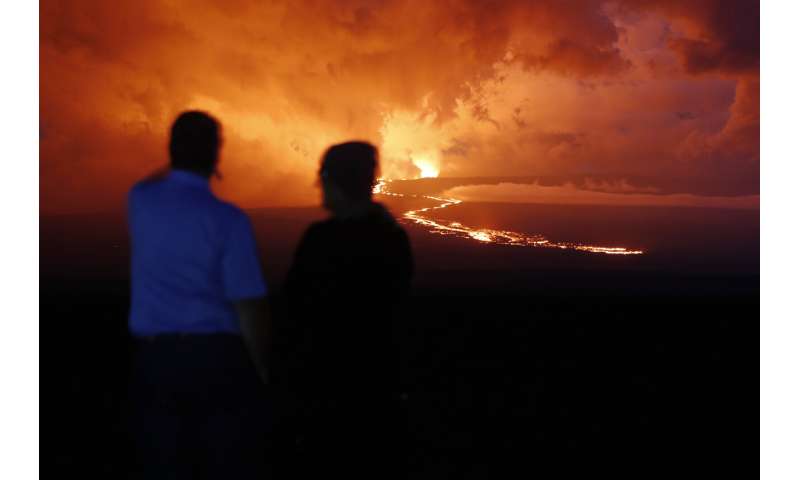
Spectators watch the lava flow down the mountain from the Mauna Loa eruption, Tuesday, Nov. 29, 2022, near Hilo, Hawaii. Credit: AP Photo/Marco Garcia
-
![A flare and a spare: Hawaii volcano visitors see 2 eruptions]()
People pose for a photo in front of lava erupting from Hawaii’s Mauna Loa volcano Wednesday, Nov. 30, 2022, near Hilo, Hawaii. Credit: AP Photo/Gregory Bull
-
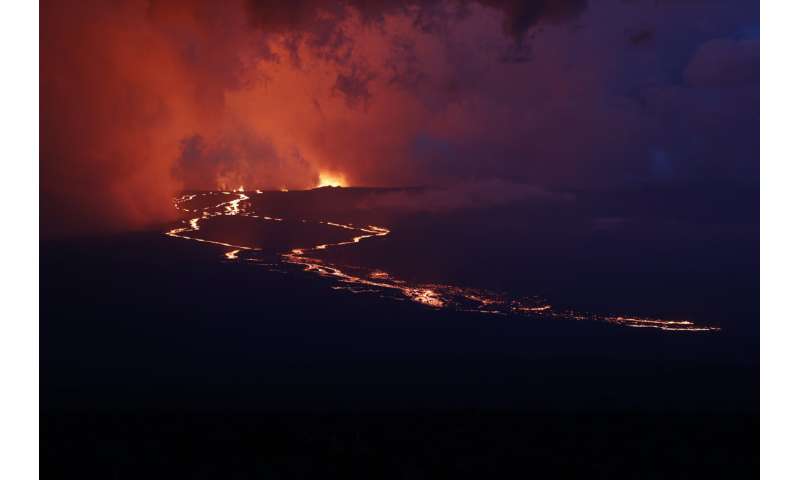
Lava flows down the mountain from the Mauna Loa eruption, Tuesday, Nov. 29, 2022, near Hilo, Hawaii. Credit: AP Photo/Marco Garcia
-
![A flare and a spare: Hawaii volcano visitors see 2 eruptions]()
Spectators watch the lava flow down the mountain from the Mauna Loa eruption, Tuesday, Nov. 29, 2022, near Hilo, Hawaii. Credit: AP Photo/Marco Garcia
-
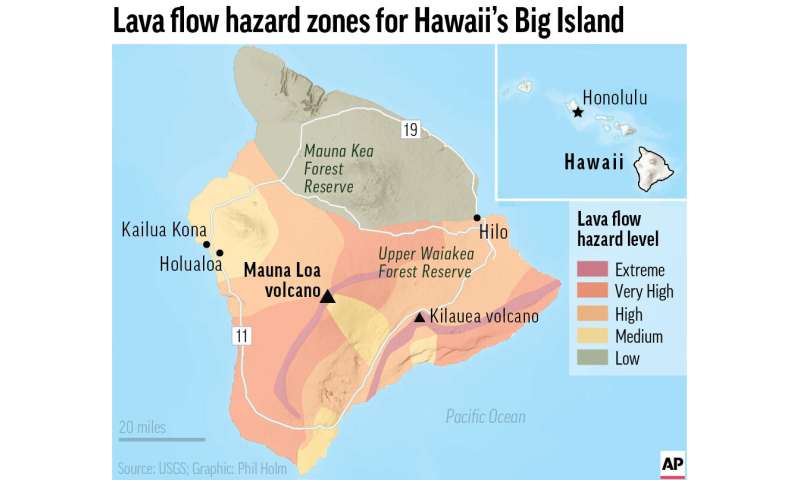
The ground is shaking and swelling at Mauna Loa, the largest active volcano in the world, indicating that it could erupt. Scientists say they don’t expect that to happen right away but officials on the Big Island of Hawaii are telling residents to be prepared in case it does erupt soon. This map shows the lava flow hazard level zones for the island.
-
![A flare and a spare: Hawaii volcano visitors see 2 eruptions]()
Brian Lichtenstein, of San Diego, takes a photo in front of lava erupting from Hawaii’s Mauna Loa volcano Wednesday, Nov. 30, 2022, near Hilo, Hawaii. Credit: AP Photo/Gregory Bull
-
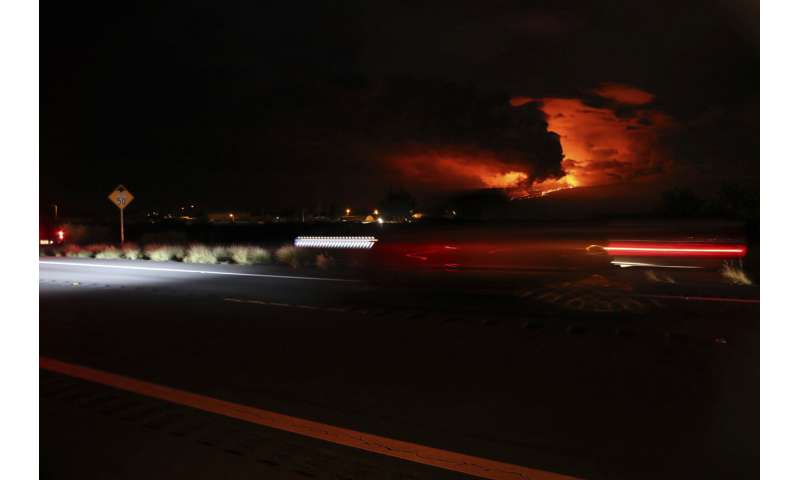
As the Mauna Loa eruption takes place in the background, a car travels down Saddle Road, Tuesday, Nov. 29, 2022, near Hilo, Hawaii. Despite local authorities enforcing a no parking zone in the area near the eruption site, many spectators are flooding the area and illegally parking on the side of the highway. Credit: AP Photo/Marco Garcia
-
![A flare and a spare: Hawaii volcano visitors see 2 eruptions]()
Spectators watch the lava flow down the mountain from the Mauna Loa eruption, Tuesday, Nov. 29, 2022, near Hilo, Hawaii. Credit: AP Photo/Marco Garcia
-
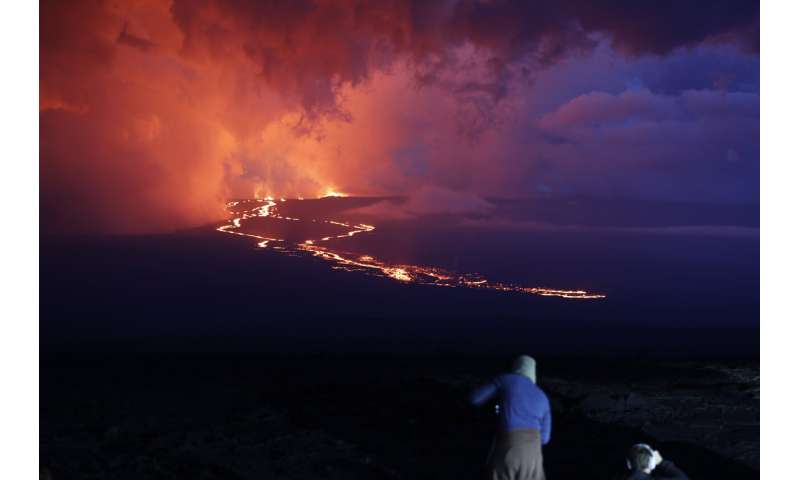
Spectators watch the lava flow down the mountain from the Mauna Loa eruption, Tuesday, Nov. 29, 2022, near Hilo, Hawaii. Credit: AP Photo/Marco Garcia
-
![A flare and a spare: Hawaii volcano visitors see 2 eruptions]()
A spectator watches the lava flow down the mountain from the Mauna Loa eruption, Tuesday, Nov. 29, 2022, near Hilo, Hawaii. Credit: AP Photo/Marco Garcia
The flow was likely to slow down about 4 miles (6.4 kilometers) from the road, when it hits flatter ground.
It was not clear when or if the lava will reach the road. It could hit flatter ground later Tuesday or Wednesday, according to Hon.
The smell of volcanic gases and sulfur was thick Tuesday along Saddle Road, where people watched the wide stream of lava creep closer. Clouds cleared to reveal a large plume of gas and ash rising from a vent on the mountain.
Gov. David Ige issued an emergency proclamation to allow responders to arrive quickly or limit access as needed.
Lava crossed the Mauna Loa Observatory access road Monday night and cut off power to the facility, Hon said. It could move toward the county seat of Hilo, he added, but that could take a week or longer.
Meanwhile, scientists are trying to measure the gas emitted from the eruption.
“It’s just very early in this eruption right now,” Hon said.
© 2022 The Associated Press. All rights reserved. This material may not be published, broadcast, rewritten or redistributed without permission.
Citation:
A flare and a spare: Hawaii volcano visitors see 2 eruptions (2022, November 30)
retrieved 30 November 2022
from https://phys.org/news/2022-11-flare-hawaii-volcano-visitors-eruptions.html
This document is subject to copyright. Apart from any fair dealing for the purpose of private study or research, no
part may be reproduced without the written permission. The content is provided for information purposes only.
For all the latest Science News Click Here
For the latest news and updates, follow us on Google News.


